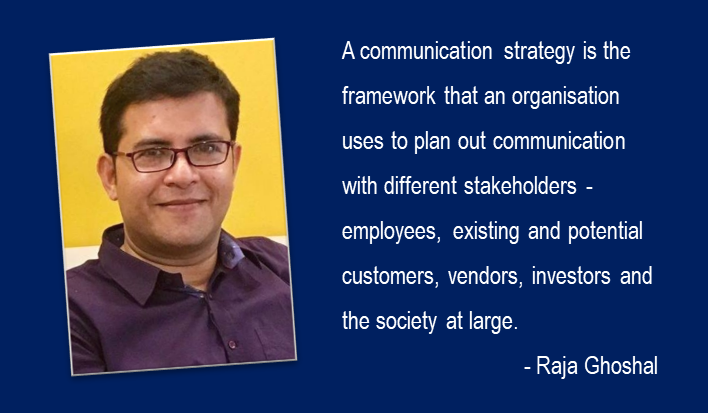Question: What is the role of Strategy in Communications?
Answer: Everything. And then some…
Strategic communication is more than just a buzzword. In essence, it is the heart and soul of any communication. To cut the clutter, it is best defined as ‘purposeful’ communication. However, for that any organization/brand would first have to be very clear as to what its avowed purpose behind a communication is. Easier said than done though. It needs a systematic approach, including requisite research and brainstorming with the stakeholders and leadership to arrive at clear cut written purpose or objective behind communications.
In essence, Strategic communicators hatch a plan to effectively communicate content/ policy/ service. They generate the ideas emanating from the objective, put in the required research to gain insight, identify goals and then work on the delivery mechanisms (read media strategy) to implement the goals of the plan. A thought through strategic communication integrates ways and means to meet the desired objectives. Equally important is to take stock and measure how much of those objectives are being met by the communication strategy and the areas which need course correction.
It is imperative in the strategic communication approach that the communication is aligned with the organizational goals and not a thing apart, howsoever creative or brilliant in a standalone manner.
Also, where effective communication strategy is in practice, the employees of the organisation are clearly instructed on how to handle the various forms of communication that the company uses. These can be both internal and external. Indeed, strategy is like the backbone, the non-glamourous, hard core brain work before the communication can take shape in its creative avatar. In the absence of a sound strategy, a creative may well turn out to be all style, no substance.
A Corporate Communication Strategy can be said to be the framework that an organisation uses to plan out communication with different stakeholders – employees, existing and potential customers, vendors, investors and the society at large. It can be a tool enhance the raison d’ etre of your organisation while at the same time enhancing its reputation.
Apart from research and insights, it is wise to learn from the communication strategies of organisation who are being able to do it successfully. Also, it is important to clearly enumerate an organisation’s key metrics in order to gauge the best outcome from the strategic communication in question.
While, it appears, precise, the road to effective communication is not without its set of challenges. Public Relations itself is a tool in the strategic communication function but stakes are high and wrong moves can prove to be detrimental. Remember the hard-hitting saying, ““It takes 20 years to build a reputation, and five minutes to ruin it”.
Communicators who need to protect an organisation’s /brand’s reputation have to deal with falling trust in institutions, rising stakeholder expectations, social contribution and a shift in the balance of power toward stakeholders. Also they must leverage the digital communication jungle to their advantage. Solutions include direct and meaningful engagement with stakeholders, consistency and transparency in communications, embedding authentic values, credible spokespersons and genuine commitment towards society. There are no short-cuts!
Those who swear by the power of strategic communication for organisations argue that to a great extent the same principles can be applied in the case of a nation as well to project its image to the global community though it entails a very elaborate ground-work and a very wide network of communication platforms and a strong and unified political will to do so by those at the helm of affairs in a country.
Coming back to the world of Corporate Communication, suffice it is to say that Strategy is the first word in any communication piece and even the last one to track the desired objective. Alas, if the objective is not fulfilled, then the next course of action is a change in (you guessed it right) – strategy. And thereby hangs a tale of another strategic communication cycle!
The views and opinions published here belong to the author and do not necessarily reflect the views and opinions of the publisher.



Be the first to comment on "Strategy: The first, middle and the last word in Communication. And how!"